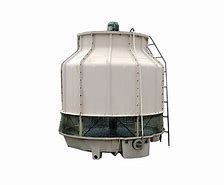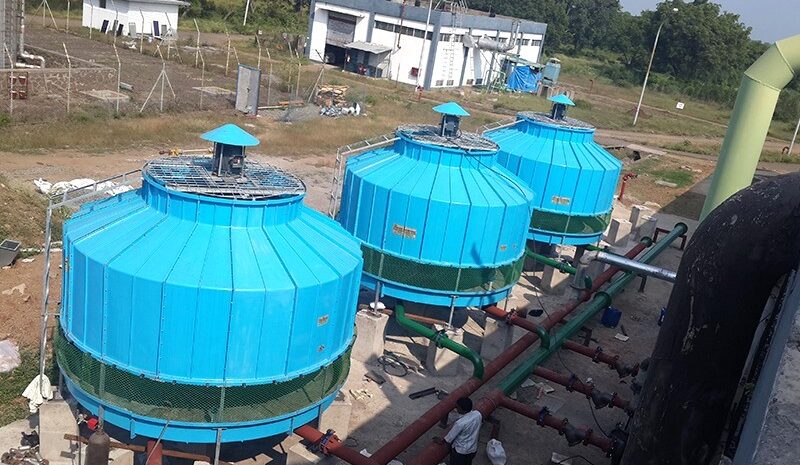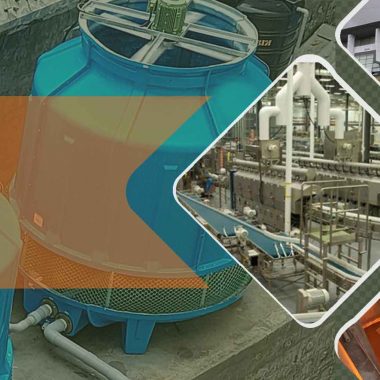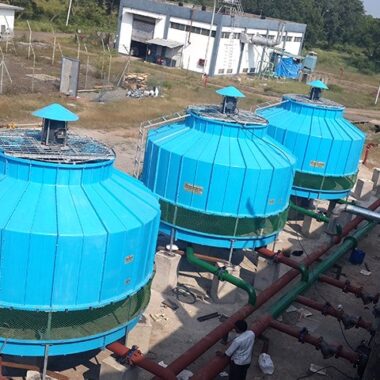Noise Reduction Techniques for Round Cooling Towers
Noise Reduction Techniques for Round Cooling Towers
Round cooling towers, whereas fundamental for heat dissipation in industrial forms, can in some cases produce noise that disturbs surrounding situations. Actualizing successful noise decrease strategies ensures agreement between industrial operations and neighboring communities. Here are a few techniques to mitigate noise from round cooling towers:
1. Fan Design and Blade Configuration:
- Optimize fan plan and edge setup to minimize aerodynamic noise. Altering fan edge pitch, shape, and spacing can reduce turbulence and lower commotion levels without compromising airflow productivity.
2. Fan Speed Control:
- Execute variable speed drives (VSDs) or frequency inverters to control fan speed based on cooling requests. Lowering fan speed amid periods of diminished heat load decreases noise output whereas conserving energy.
3. Sound Enclosures:
- Introduce sound enclosures or covers around the fan get together to contain commotion inside the tower structure. These enclosures are built utilizing sound absorbing materials and can significantly reduce noise emissions without impeding airflow.
4. Drift Eliminators:
- High-quality drift eliminators at the beat of the tower anticipate water droplets from getting away and reduce noise associated with droplet impact. opt for effective drift eliminators with minimal pressure drop to preserve tower performance.
5. Absorptive Fill Media:
- Select fill media with sound-absorbing properties to dampen noise produced by water cascading over the fill. Cellular or honey comb shaped fill materials successfully absorb sound waves whereas promoting efficient heat transfer.
6. Silencers and Attenuators:
- Install silencers or sound attenuators in the air intake and release ducts to reduce noise transmission. These gadgets include sound absorbing baffles or acoustic lining that dampen noise as air passes through.
7. Barrier Walls:
- Develop boundary dividers or wall around the cooling tower to form a physical obstruction that pieces coordinate sound transmission to nearby receptors. Ensure that barrier walls are sufficiently tall and appropriately designed to successfully deflect noise.
8. Absorptive Surfaces:
- Encompass the cooling tower with arranging features or acoustic panels made of sound absorbing materials. Vegetation, such as trees and shrubs, can serve as common obstructions and absorb sound waves, enhancing noise lessening efforts.
9. Maintenance and Inspection:
- Regularly inspect and maintain cooling tower components to recognize and address sources of noise, such as loose fasteners, worn bearings, or damaged fan edges. Appropriate lubrication and arrangement of moving parts can minimize vibration induced noise.
10. Distance and Orientation:
- Position the cooling tower absent from sensitive receptors, such as private areas or quiet zones, to relieve noise exposure. Situate the tower to coordinate commotion absent from populated ranges and towards less delicate locations whenever possible.
By consolidating these noise diminishment methods, round cooling towers can work more agreeably inside their surroundings, minimizing disturbance to adjacent communities whereas maintaining productive heat dissipation for industrial processes. Collaboration between industry partners, engineers, and acoustic experts is fundamental to implement successful noise mitigation measures tailored to specific site conditions and regulatory requirements.

Noise Reduction Techniques for Round Cooling Towers




